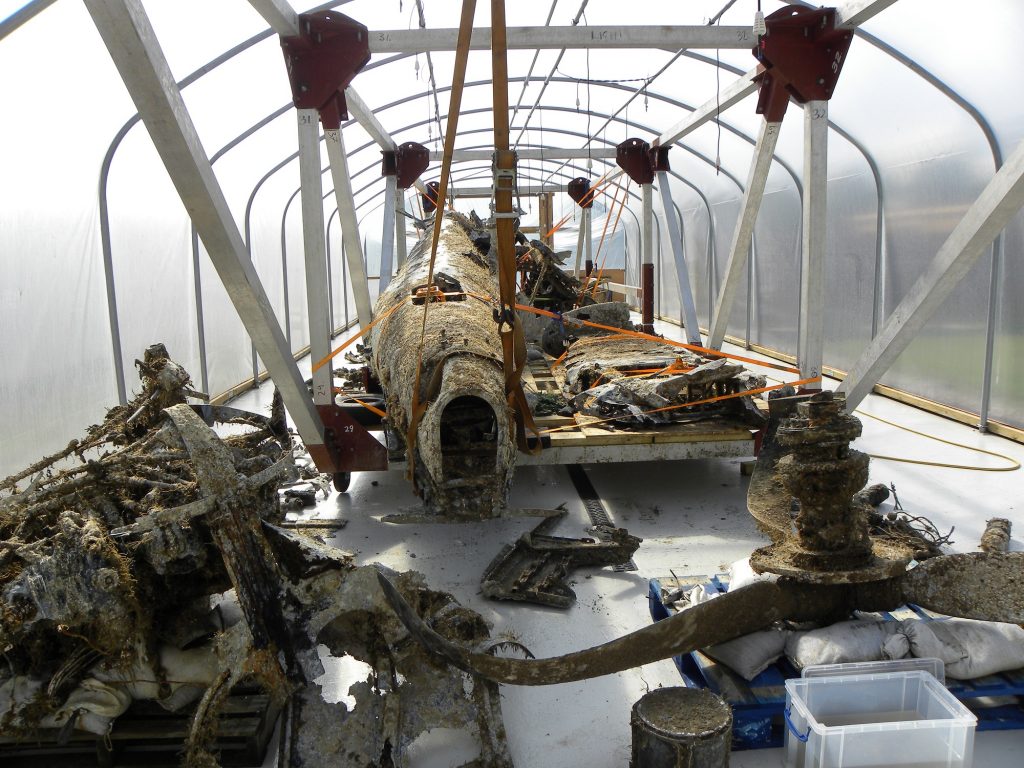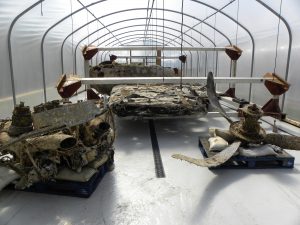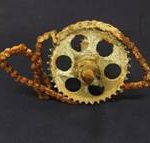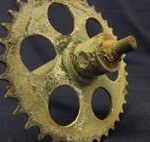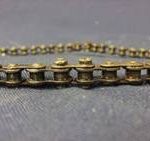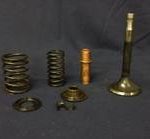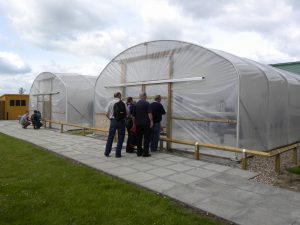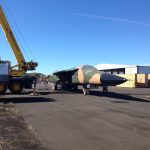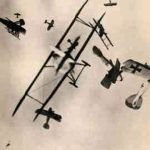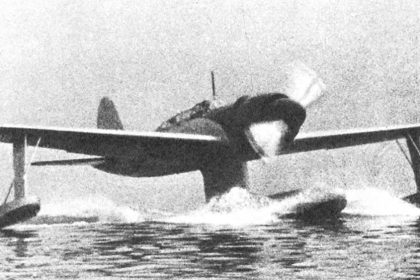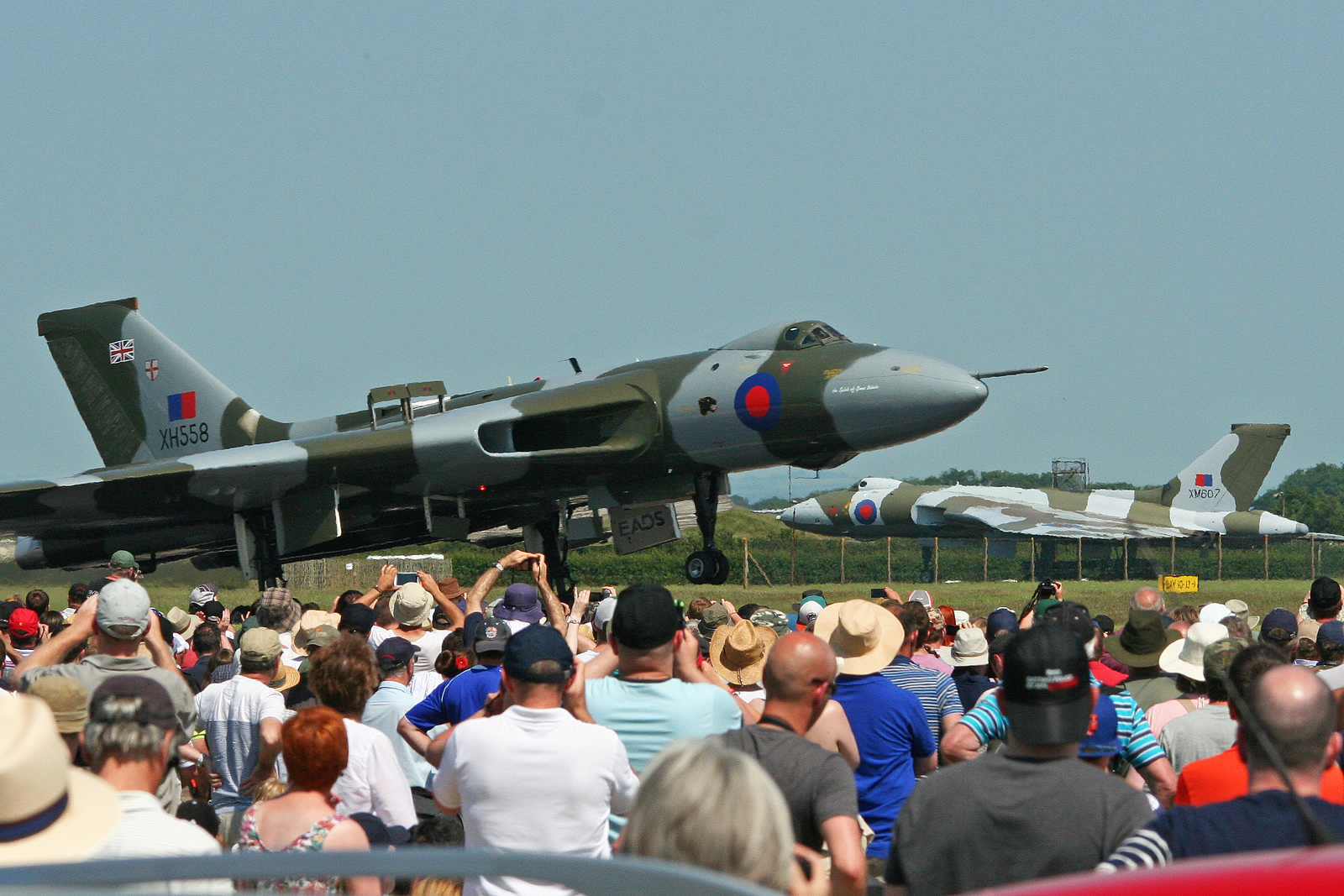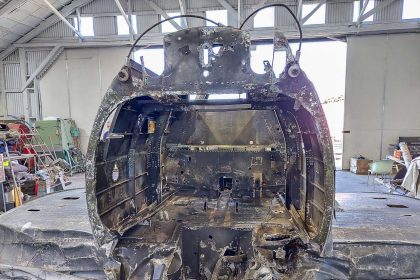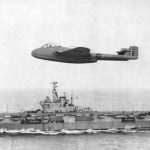(Image Credit: RAF Museum)
It’s just been a couple of months since what is believed to be the last surviving Dornier Do 17 was raised from the Godwin Sands off the coast of England. The remains of the plane which had been sitting underwater for over 70 years, were trucked to the Royal Air Force Museum in Cosford, UK. Since its arrival its fuselage and major components have been placed in hydration tunnels and are kept bathed in a mild citric acid solution to soften and loosen the marine life and corrosion that built up over its many decades submerged in salt water.
(image Credit: RAF Museum)
While the main fuselage and wings will be kept in those hydration tunnels for a long time to come, reportedly 18 months, the museum is nonetheless reporting progress, stating that: “Early indications show that the process is working as the solution is helping to soften up and remove marine accretions, allowing direct access to the airframe structure and the subsequent neutralisation of corrosion impurities.” In addition to the automated spraying taking place in the hydration tunnels, museum personnel have been manually spraying parts of the aircraft and scraping off the accumulated debris with plastic scrapers.
A number of smaller components have been painstakingly worked on by the museum’s apprentices and volunteers and some great results achieved. Previously covered in marine accretions, items including an engine valve, empty bullet cases, plus a tube from the flying controls have proved to be in remarkable condition following treatment. A sprocket and roller chain have also been conserved and are working freely once again.
Final treatment for each item restored, includes a coating it in a layer of renaissance wax or a two part clear paint product in order to protect the item. By trialling various conservation methods employed regularly in museums, the Conservation team can identify those processes most applicable to metals which have been subject to long periods underwater. Darren Priday, the Deputy Conservation Centre Manager at RAF Museum Cosford says: “Any metal removed from a salt water environment is subjected to an accelerated corrosion process if it’s not treated quickly. As the Dornier lay at the bottom of the sea, the currents and tides have effectively been like rubbing sand paper over the aircraft for 73 years but she’s survived remarkably well. This is a truly unique project with lots of unknowns and we are still learning day by day. All the signs from the work we have carried out so far are very positive, but there is still a long way to go. The Museum has recently acquired several thousand original Dornier 17 production drawings which will aid the rebuild process. These invaluable drawings, supplied by European Aeronautical Defence and Space company (EADS), will also assist us to identify parts and can be utilised for partial reconstruction to reinforce any fragile areas.”
(Image Credit: RAF Museum)
With much media coverage surrounding the difficult retrieval process, the plane has captured the interest of the public and since the plane’s arrival at Cosford, there have been thousands of visitors at the museum looking through the viewing panels that were installed for the public to get a glimpse of this exceedingly rare warbird, in fact the popularity of the plane was more than anticipated and the museum has since increased the number of viewing ports so visitors can get a better look at the now-famous plane. The museum has also instituted a program for visitors wanting to know more about the aircraft, scheduling volunteers from the museum’s Aerospace Museum Society to work on the Dornier’s components and answer visitor’s questions about the plane and the restoration project on Tuesdays and Thursdays in the museum’s Flight Test Hangar.







